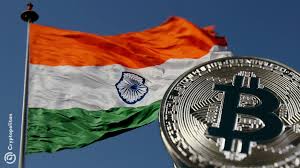Cryptocurrency has always been a polarizing subject in India. Some see it as the future of finance, while others view it as a destabilizing force that could disrupt the economy. On September 11, 2025, a leaked government document, first reported by Reuters, confirmed that India is not moving toward a comprehensive crypto law anytime soon. Instead, the country will continue with its limited regulatory framework—mainly taxes and anti-money laundering (AML) compliance—while citing systemic risks as the primary reason for caution.
This cautious stance highlights a classic balancing act: protecting financial stability versus encouraging innovation. And for crypto enthusiasts in India, it’s a moment of both clarity and frustration.
The Document: What India’s Government Actually Said
According to Reuters, the document, prepared in September 2025, emphasizes that India does not intend to fully integrate cryptocurrencies into the financial system. The rationale is simple: a full framework could inadvertently legitimize crypto, transforming what is currently considered a fringe activity into a systemic risk.
The Reserve Bank of India (RBI) has repeatedly flagged difficulties in regulating crypto because of peer-to-peer transfers and decentralized exchanges, which are nearly impossible to monitor effectively. As a result, the government is sticking with partial oversight—forcing crypto exchanges to register under AML laws and imposing strict taxation rules.
Currently, Indian households hold about $4.5 billion in crypto assets (Business Standard). While that figure may seem large, policymakers argue it is still too small to destabilize the financial system. However, if crypto were mainstreamed through regulation, inflows could spike dramatically, creating unforeseen risks.
This “watch but don’t embrace” approach has already shaped India’s crypto market. For instance, when the 30% flat tax on profits and 1% TDS on transfers was introduced in 2022, trading volumes on Indian exchanges dropped sharply (Coinpedia). The government now views that outcome as proof that cautious regulation prevents excessive speculation without driving crypto fully underground.
Why Systemic Risks Worry India
So, why exactly is India so concerned? In short, regulators fear that crypto’s volatility could ripple into traditional banking and payments. The RBI has long warned that crypto could undermine monetary policy, encourage capital flight, and even trigger liquidity crises.
Consider a scenario where a major crypto collapse sparks panic withdrawals from banks or pushes investors toward unregulated payment channels. Such events could freeze liquidity in an economy that is still highly cash-reliant in rural areas.
Moreover, by keeping crypto at arm’s length, the government ensures no direct links between cryptocurrencies and formal financial institutions. While this might frustrate crypto investors, officials believe it has minimized the chances of broader contagion. As The Hindu noted, regulators fear that legitimizing crypto too quickly could attract institutional investors, amplifying shocks during market downturns.
Stablecoins vs. UPI: Protecting a National Crown Jewel
Interestingly, the leaked document singles out stablecoins as a particular threat. While coins like USDT and USDC are designed to maintain a fixed value, usually pegged to the U.S. dollar, Indian regulators believe their adoption could erode the dominance of the Unified Payments Interface (UPI).
For context, UPI has been nothing short of revolutionary in India’s payment landscape. With over 13 billion transactions monthly, UPI enables free, real-time transfers across banks, apps, and even small merchants (India Today). It is a symbol of India’s digital success story.
If stablecoins were to gain traction, however, they could create parallel payment rails outside the rupee system. Since most stablecoins are pegged to the U.S. dollar, they could also expose Indian users to forex risks and complicate monetary policy. Worse, history shows that stablecoins are not always stable—the TerraUSD collapse in 2022 being a dramatic reminder.
By comparison, China has banned private stablecoins while pushing its own digital yuan, and Japan is introducing controlled frameworks. India seems to be opting for a middle path: keep stablecoins in check while bolstering its own digital rupee pilot.
India’s Rocky History With Crypto
To understand today’s stance, we need to revisit India’s turbulent crypto journey:
- 2018: The RBI banned banks from servicing crypto exchanges, citing money laundering risks.
- 2020: The Supreme Court struck down the ban, sparking a surge in adoption (Indian Express).
- 2021: The government floated a bill to ban “private cryptocurrencies” while preparing a central bank digital currency (CBDC). The bill never materialized.
- 2022: Taxes of 30% on gains and 1% TDS on transfers were introduced, leading to a steep drop in volumes.
- 2023: The RBI launched a digital rupee pilot and pushed for global crypto standards during its G20 presidency.
- 2024–2025: India delayed comprehensive legislation, awaiting global moves like the U.S. GENIUS Act.
Despite these hurdles, India has remained one of the world’s largest markets by user numbers, with over 100 million crypto investors according to KYCHub.
Global Context: How India Compares
Globally, approaches to crypto vary widely. The United States under President Trump passed the GENIUS Act, which provided clear rules for stablecoins and fueled renewed institutional interest. Meanwhile, the European Union is implementing its MiCA framework, which emphasizes consumer protections (FinanceFeeds).
Countries like Japan and Australia are cautiously creating regulatory frameworks without overpromoting crypto. In contrast, China has banned most crypto activities but continues advancing its CBDC.
Against this backdrop, India’s strategy is clearly defensive: avoiding both extremes of outright ban and full adoption. Instead, it has committed to implementing the OECD’s Crypto-Asset Reporting Framework by 2027 to align with global tax transparency standards.
What This Means for Indian Crypto Users
For everyday investors, the message is clear: nothing big is changing right now. You can still buy, hold, and sell cryptocurrencies, but you’ll face:
- 30% tax on profits
- 1% TDS on transfers
- AML compliance requirements for exchanges
- No easy banking integrations
Stablecoin users may face even tighter restrictions in the near future, especially if U.S.-pegged tokens like USDT or USDC gain popularity. However, the expanding digital rupee could serve as a government-approved alternative for digital payments.
Industry leaders such as Sumit Gupta of CoinDCX have been urging the government to establish a Web3 working group, pointing out that taxation already implies partial recognition of crypto (CoinGabbar). Even the Supreme Court has pressed the government for more clarity, stressing the need for rules beyond taxation.
Looking Ahead: A Strategy of Stability Over Speed
India’s decision to stick with limited rules, despite growing global adoption, reflects its priority: stability over speed. While this frustrates innovation advocates, the government sees it as necessary to protect its payment systems, especially UPI, and preserve macroeconomic stability.
As the global landscape shifts—with the U.S., EU, and Asia each taking different paths—India may eventually adjust. But for now, the message is simple: crypto is allowed, but not encouraged.
For investors, this means staying compliant, diversifying portfolios, and keeping an eye on upcoming Financial Stability Board (FSB) reviews in October 2025, which could shape future policy directions.
Final Thoughts
India’s crypto policy is less about innovation and more about risk containment. By resisting a full framework, the government is keeping digital assets in check while nurturing its digital rupee and protecting UPI’s dominance. Whether this cautious strategy pays off or leaves India behind in the global crypto race remains to be seen.
So, what do you think? Is India playing it too safe, or is caution the smartest strategy in such a volatile sector? Share your views—I’d love to hear from fellow crypto enthusiasts.
Sources:
- Reuters – Exclusive: India resists full crypto framework, fears systemic risks, document shows (2025-09-10)
- Business Standard – India takes cautious approach on cryptocurrencies, RBI cites concerns (2025-09-10)
- Coinpedia – Crypto Regulation in India 2025 and Tax Policy Explained (2025-09-10)
- The Hindu – India resists full crypto framework, fears systemic risks (2025-09-10)
- India Today – Document shows India resisting complete crypto regulation: Report (2025-09-10)
- Indian Express – India’s crypto regulation saga explained (2025-09-10)
- KYCHub – Cryptocurrency Regulations in India: A Guide for 2025 (2025-07-16)
- Cryptonews – India Stalls Full Crypto Framework, Citing Systemic Risk Fears (2025-09-10)
- FinanceFeeds – India Leans Away From Crypto Legislation Amid Systemic Risk Fears (2025-09-10)
- CoinGabbar – India Crypto Regulation 2025: Latest Policy Updates (2025-08-15)



























